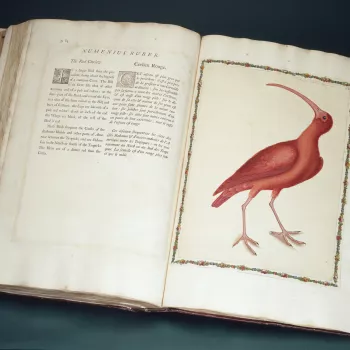A Century of birds from the Himalaya Mountains 1832
RCIN 1122372

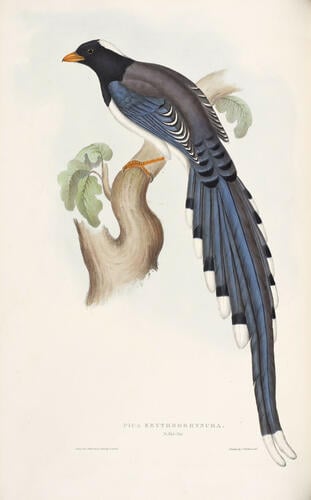
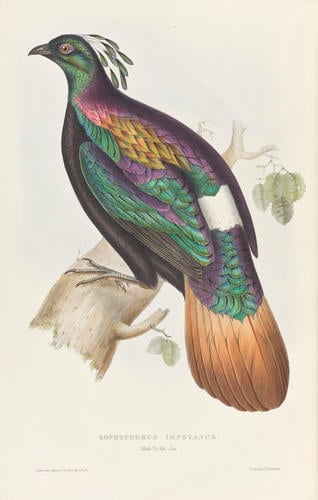


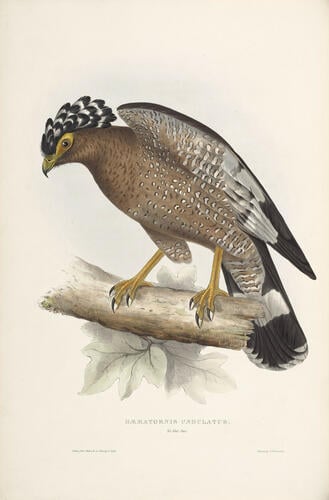
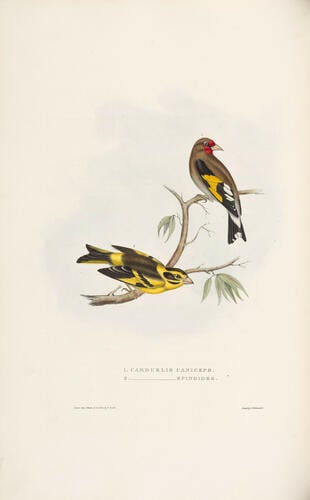
-
John Gould was born in Lyme Regis on the Dorset coast in 1804 but was brought up in Surrey and later Windsor, where his father was one of the gardeners at the castle. The young Gould taught himself taxidermy from an early age and soon established a skill for the craft. Following a brief 18-month stint as gardener at Ripley Hall in Yorkshire, in 1824, he moved to London to establish a shop in the city.
The taxidermy enterprise was a successful one and Gould counted important public figures, including George IV (for whom he stuffed a pet giraffe in 1826), among his clients. In 1828, he won a competition to become taxidermist at the museum of the Zoological Society of London and eventually became the curator of the museum where he developed connections with some of the most prominent naturalists of the day and received specimens from around the world to preserve and prepare for display. He was also noted for his own knowledge of ornithology and in 1836 assisted Charles Darwin in understanding the specimens collected from the Beagle voyage to the Galapagos, demonstrating that the birds collected were not different species as Darwin initially thought, but varieties of the same species, thus inspiring his revolutionary theory of natural selection.
Gould began to publish fine ornithological volumes from 1830. They are among the most famous and important 'bird-books' of the nineteenth century and the volumes in the Royal Library were subscribed to by Prince Albert and Queen Victoria.
Following the receipt of a large number of birds from the Himalaya Mountains, the enterprising Gould decided to publish a lavishly printed folio volume containing lithographic plates detailing the specimens. Though not a prolific artist himself, he did sketch the animals for his wife Elizabeth, who was an amateur artist herself, to draw and transfer to the stones. The scientific descriptions of the birds were written by the Irish zoologist Nicholas Aylward Vigors. Unfortunately, a publisher could not be found for the volume and Gould took it upon himself to publish it privately. It was printed in stages and published in twenty monthly parts between 1830 and 1832.The book, A Century of Birds from the Himalaya Mountains, was an instant success and he followed it with volumes on the birds of Europe, Toucans and Trogons. Among other artists hired by Gould to carry out these large volumes was Edward Lear, the future nonsense poet, who made several lithographs for the works. They are among the most beautiful images in the volumes.
-
Creator(s)
(litho-printer)(publisher) -
Category
-
Alternative title(s)
A Century of birds from the Himalaya Mountains / by John Gould.




